Split Pea Hummus with Capers & Red Onion
Every time I have guests for dinner, I typically serve some sort of homemade hummus or vegetable spread as an entrée. Most of the time I end up making the good old chickpea hummus because it’s one of favourite spreads and everyone loves it. But if I’m pressed for time (because yes, I’m in that tiny group of crazy people who actually thinks that removing the chickpeas’ skins is the secret to making the perfect hummus), I use split peas instead.
This is an incredibly easy, yet really tasty bean spread that’s perfect served on top of toasted bread or used as a dip for raw vegetables. I love to dip carrots and turnips into this hummus, but peppers (cut into strips), raw broccoli florets and/or parsnips are also excellent options.
I always have this thing going on with the blog where I try to balance more complex recipes with everyday, casual ones. That balance is hard to strive because people who aren’t familiar with vegan cooking tend to prefer simple and straightforward recipes, whereas long time vegans and/or foodies appreciate bold and unusual combination of ingredients and techniques.
At the end of the day, I always try to stay true to myself and my cooking “style”. However, I hope that recipes like this one – that do not involve a long list of ingredients but deliver on flavour – inspire people to venture into cooking more vegan food and, most importantly, help break the misconception that eating vegan is all about pricy superfoods and green smoothies (nothing against both, it just totally annoys me when I hear people saying that – and I do, all the time).
Split Pea Hummus with Capers & Red Onion
serves a crowd
195 g / 1 cup green split peas, soaked overnight, drained and rinsed
¾ teaspoon sea salt
¼ teaspoon freshly ground black pepper
1 teaspoon za’atar
1 garlic clove, minced
2 Tablespoons extra-virgin olive oil, plus a little more for serving
3 Tablespoons lemon juice
2 Tablespoon warm water
65 g / half a medium sized red onion, finely chopped
27 g / 2 Tablespoons brined capers, rinsed, dried and chopped
Add the split peas to a large pot over medium-high heat. Add enough water to cover the peas by 2 cm (0.8 inches). Bring to a boil and, once boiling, reduce the heat to low-medium and cook for 20 minutes or until soft. Some foam might naturally form on top of the cooking liquid – in that case, just take it out with a slotted spoon.
Drain the peas once they are cooked and cooled. Add them to the bowl of a food processor along with the sea salt, black pepper, za’atar, garlic clove, olive oil, lemon juice and water. Run the machine until you get a very smooth hummus. If the mixture seems too dry, add 1 or 2 additional tablespoons of water.
Put the split pea hummus in a medium sized deep plate. Add the red onion and capers on top and finish with a generous drizzle of olive oil.
Lentil and Mushroom Salad with Sumac Lemon Dressing
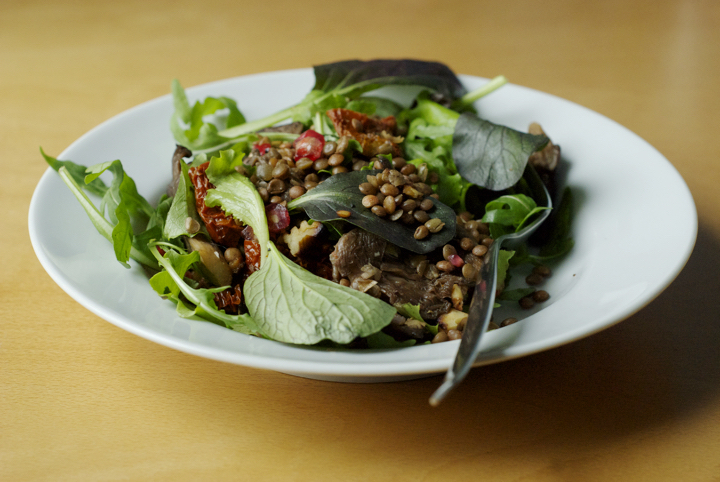 When the weather starts getting colder, I eat soups and stews for the most part of my meals. However though, salads are still welcomed, as long as they’re heartier and incorporate some cooked elements.This salad makes for a perfect, quick lunch anytime of the week. I’ve made it countless times and sometimes substitute the lentils for whole grains such as barley and bulgur and it tastes delicious as well.
When the weather starts getting colder, I eat soups and stews for the most part of my meals. However though, salads are still welcomed, as long as they’re heartier and incorporate some cooked elements.This salad makes for a perfect, quick lunch anytime of the week. I’ve made it countless times and sometimes substitute the lentils for whole grains such as barley and bulgur and it tastes delicious as well.
One thing you should pay attention to when making this dish is not to overcook the lentils. There’s nothing worse than mushy, soft lentils. To avoid this, cook them for no longer than 15 minutes and they’ll be perfect. As far as the dressing goes, sumac is it’s key component, so please don’t skimp on that. I’ve first found out about sumac one or two years ago when I decided to make my own za’atar. It’s a hard to find and reasonably pricy spice here in Portugal (although some speciality stores sell it these days), but you don’t need to use much to feel its tangy and lemon-y flavour. I hope you enjoy the salad and the start of the new season! Have a good weekend :)
Lentil and Mushroom Salad with Sumac Lemon Dressing
(serves 4, as a starter)
105 g / ½ cup brown lentils, washed, drained and picked through
1 Tbs. olive oil
2 medium garlic cloves, crushed
300 g pleurothus mushrooms
50 g / 8 halves oil packed sundried tomatoes, roughly chopped
50 gr walnuts, toasted and roughly chopped
2 big handfuls / 40 g salad leaves such as rocket, baby spinach, etc.
105 g/ ½ cup (packed) pomegranate seeds
for the sumac lemon dressing:
1 ½ tsp. sumac
3 Tbs. lemon juice
60 ml / ¼ cup olive oil
1 small garlic clove, minced
salt and pepper to taste
In a small pan over medium-high heat, add the lentils and 2 cups of water. Bring to a boil and, once boiling, reduce the heat to low-medium and cook for 14-16 minutes or until tender but still al dente. Add ½ teaspoon of salt to the lentils, stir everything, and drain. Add the lentils to a large bowl and reserve.
Heat a large skillet over medium-high heat and add 1 tablespoon of oil. Once the oil is hot, but not smoking, add the mushrooms and garlic cloves and cook for 5-8 minutes or until golden brown. Add a pinch of salt and pepper as soon as they’re cooked, remove the garlic, and add them to the bowl with the lentils.
Add the sundried tomatoes, walnuts, salad leaves and pomegranate seeds to the bowl with the lentils and mushrooms and toss everything together gently.
For the dressing, mix all the ingredients in a small glass jar. Cover the jar with the lid and agitate vigorously until everything’s combined. Pour the dressing over the salad (not all of it – 3 to 4 tablespoons should be enough) and serve immediately.
Grilled Pepper and Onion Salad with New Potatoes
This salad recipe is inspired by the popular festivities held in Lisbon and Porto around this time of the year. In these events, it’s common seeing people gathering on the streets to eat, and you can literally feel the smell of barbecued foods in the air wherever you go – mostly sardines and peppers. I don’t eat sardines (or any fish for that matter), so I came up with a recipe that still conveys the spirit of the festivities, but that is animal-free. I don’t usually brag about recipes I post here on the blog but I have a special place in my heart (and belly) for this one. I made this salad three times since last week and I seem not to get enough of it (as a matter of fact, I also had it for lunch today). To make it more of a complete (nutrionally speaking) meal, you can toss in some grilled tofu or cooked red beans. You could also eat it in a bruschetta, by grilling some bread slices and topping it up with spoonfuls of the salad (I’d leave the potatoes out in that case). I believe you can add flavour to your foods without depending on oil to get it, but it’s crucial to this recipe to use the amount of the said ingredient specified in the directions and not a bit less .The oil and vinegar mixture will coat the vegetables thoroughly, imparting them a beautiful flavour so, make also sure you use a good quality olive oil in here. Olive oil is a key ingredient to many Portuguese-inspired dishes, and this one really is no exception. Enjoy!
Grilled Pepper and Onion Salad with New Potatoes
(serves 2 as a main, 4 as a side)
Ingredients:
1 medium sized red pepper, cut into strips
1 medium sized green pepper, cut into strips
1 large onion, cut into rings
10 small new potatoes, skins on (about 300 grams)
3 tablespoons olive oil, plus more for brushing the vegetables
2 tablespoons red wine vinegar
1 tablespoon capers (optional, but highly recommended)
1 small garlic clove, minced
1 small handful coriander, coarsely chopped
salt
1. Fill a medium sized pan with water, add the potatoes and about 1 teaspoon of salt, and let it boil. Once boiling, decrease the heat to medium and cook the potatoes for about 15 minutes. Then, pass them through cold running water. Transfer the potatoes to a cutting board and when they’re cool enough to handle, cut them into halves. Set aside.
2. Brush a grilling pan with olive oil and set it on high heat. When it’s hot, but not smoking, add the peppers’ strips, skin side down, seasoned with a pinch of salt. Grill them for 7 to 10 minutes, or until slightly charred – to get visible grilling marks, I like to press down the peppers’ strips with the back of a spoon against the grilling surface. Grill on the other side for about 5 minutes. Transfer the grilled peppers to a plate and set aside.
3. Add the onion rings (also lightly salted) to the grilling pan and cook them for 3 to 4 minutes or until soft and browned.
4. In a medium sized bowl, combine 3 tablespoons of olive oil with the red wine vinegar. Add a pinch of salt and whisk until incorporated.
5. Put all the vegetables (onion, peppers’ strips and boiled potatoes) on a large serving plate. Pour the oil and vinegar mixture over them and toss well. Finally, add the capers (if using), minced garlic and coriander on top. Serve immediately.
Luísa’s Flatbread
I’m glad to have friends who like to cook. More than that, I’m glad to have friends who can actually cook quite well. There are some who have an undeniable sweet tooth; others who are their best when cooking savoury dishes; some others who are experts on the art of ultimate clean-up-the-fridge meals; those who don’t actually cook at all, and even those rare species who don’t actually cook at all but always value a great, high-quality meal.
Having said this, I’m not quite sure if Luísa matches any of these patterns. I’d rather say she just enjoys cooking, and specially fascinates (as I do) with the social phenomenons which revolve around the act of preparing and eating food such as, for instance: people cooking together, exchanging ideas, methods and recipes; sitting at the table and sharing a good, homemade meal, with closest friends and family. We’ve been talking lately about making a sort of cooking meeting, where we (amongst other people) would cook and share our specialities and enjoy a great meal together in the end – I’m so looking forward to that to happen.
We didn’t know we had common visions towards food until a few months ago, when we got to know each other better at that barbecue party thrown in order to celebrate the end of the semester. She was preparing flatbreads and, as a bread lover you already know I am, that immediately caught my attention. Her method (I won’t call it a recipe, as she was actually following her intuition in order to achieve the desired results) couldn’t be easier: flour, salt, olive oil and water, all mixed together in order to produce a lovely soft dough which is afterwards rolled out and cooked in the oven until crisp. Since then, I’ve used her “method” a lot of times always with successful and delicious outcomes, so today I thought writing down a proper recipe for you. This time around, I have made the flatbreads in the grilling pan and actually enjoyed them more that way (by grilling them, you can control the cooking time more easily, avoiding over-cooking). Luísa had, in her version, only used regular flour ,so I thought combining it with spelt flour for a dough with a more distinct flavour – if you don’t have it at hand, regular (preferably high grade) flour will do it. You can certainly play a lot with this recipe too: adding spices, fresh or dried herbs to the dough is always a good idea. So far, I’ve tried a batch with dried thyme and oregano and another one with crushed cumin seeds – both were that good. Thank you Luísa! ; )
Luísa’s flatbread
(makes 5 to 6 portions)
Ingredients:
108 grams (3/4 cups) high grade flour
65 grams (1/2 cup) spelt flour
½ teaspoon fleur de sel
¼ cup olive oil, plus extra, for drizzling
1/3 cup (80 ml) warm water
1. In a large bowl, combine the dry ingredients.
2. Add the olive oil to the bowl, stir with a spatula or a wooden spoon, and then slowly pour in the water, stirring as you go. Now, you can start working the dough with your hands.
3. Transfer the dough to a floured surface and kneed it for 5 minutes, or until it’s elastic. Add a bit more flour to the dough if it feels sticky (I didn’t have to add any, but I suspect it always depends on the temperature and/or humidity of the place you are in).
4. Divide the dough into 5 equal portions. Roll out each portion so that it’s about 32 cm (about 12.5 inches) long. Let it rest, covered with parchment paper, for 5 minutes at room temperature.
5. In the meantime, heat a large grilling pan over medium-high heat and lightly coat with olive oil. When hot, but not smoking, add the flatbreads (I added one at the time since my pan wasn’t large enough to accommodate more than one unit) and grill them for 1 to 2 minutes on each side or until golden brown.
6. Serve right after cooking, drizzled with a little more olive oil and with an extra pinch of salt.
Spicy Tofu with Peas and Mint
My week has been really busy, and all I’ve been eating lately is kind of boring and predictable stuff (basically, lots of sandwiches and soup). So today, I finally gave myself some time to go into the kitchen and prepare a proper lunch. That lunch – for which the recipe follows – relies on a favorite combination of mine: peas and mint. As far as the preparation time goes, this is the kind of dish that will only take you a couple minutes to make, but even so, you can certainly prepare the tofu and rub the spices onto it and left the whole thing in the refrigerator until you start cooking.
Typically, I’d serve this along with some raita (with all natural, unsweetened, soy yogurt, grated cucumber, and good pinch of salt), but today, after an hour running, I was craving a more satisfying meal and made, instead, some buckwheat pancakes to go with it. I often like my tofu the simple (and easy) way - coated in a little olive oil, sprinkled with sea salt, and therefore grilled until golden brown - but rubbing a spice mix into it before grilling/frying, might be a new favorite method. Actually, as I type this, I can’t help myself but thinking on variations to the mixture of spices suggested below: feel free to add curry powder for a more indian scented flavor, or even going a completely different way, by substiting the cumin, ginger, paprika and turmeric, for dried herbs such as rosemary, thyme and oregano.
Spicy tofu with peas and mint
(serves 4)
400 grams extra firm tofu, rinsed, pat dry, and cubbed
450 grams frozen peas
1 teaspoon powdered garlic
2 teaspoons ground cumin
¼ teaspoon black pepper
1 teaspoon ground powdered ginger
½ teaspoon turmeric
1 tablespoon paprika
2 ½ tablespoons lemon juice
1 ½ tablespoons tamari
a few fresh mint leaves, finely chopped
2 tablespoons olive oil
1. Combine the garlic, cumin, black pepper, ginger, turmeric and paprika in a large bowl. Add the lemon juice and tamari and mix well.
2. Rub the spice mixture into the tofu cubes, making sure they’re all well coated. Set aside.
3. Bring enough salted water to a boil, add the peas, and cook for 3 to 4 minutes. Drain the peas, wash them under cold running water and drain again.
4. In a large frying pan over medium-high heat, add the olive oil. Once hot, but not smoking, add the tofu cubes and fry for 6 to 8 minutes, or until golden brown.
5. Transfer the peas and tofu to a large serving plate, and garnish with fresh mint. Serve immediately.
recipe inspired by Rose Elliot’s The Vegetarian Supercook, published by octopus Publishing Group in 2006
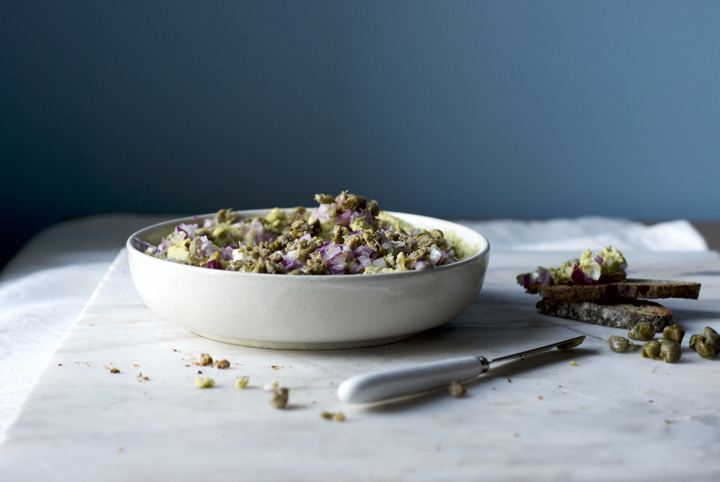
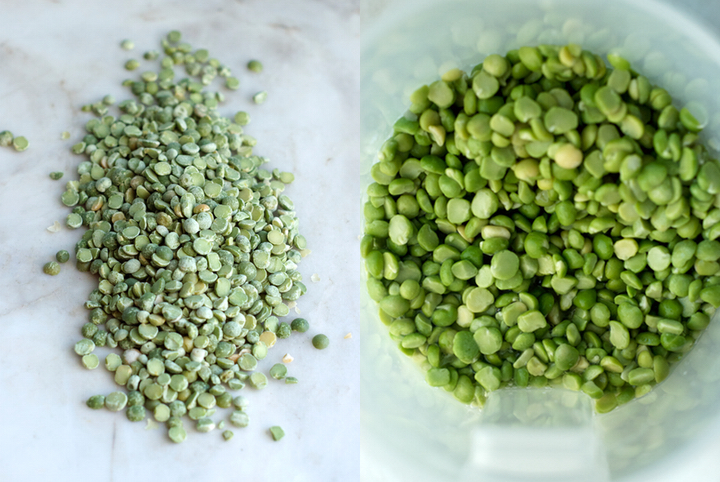
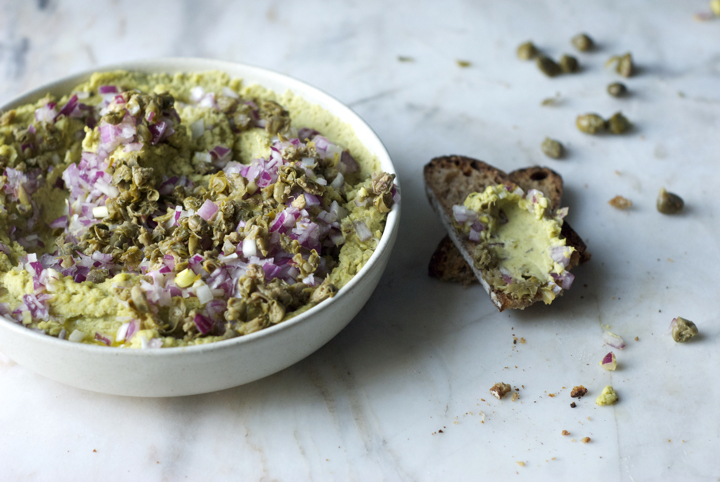
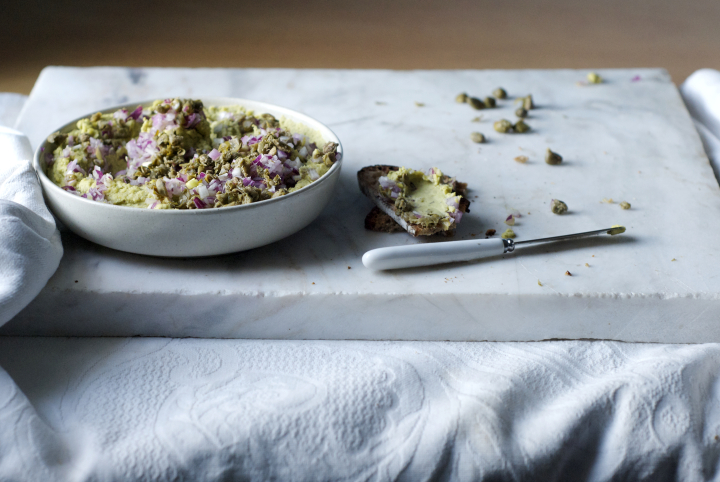
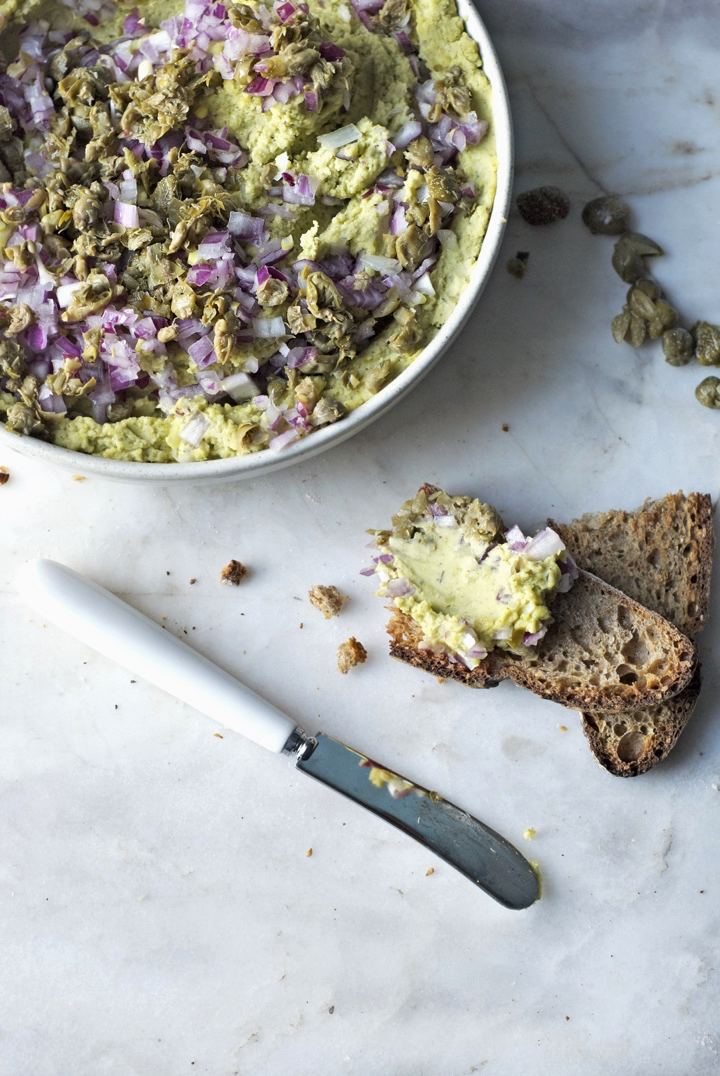
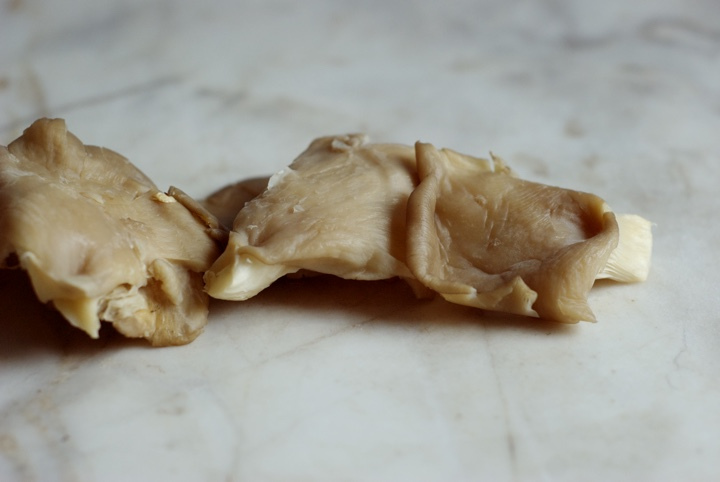
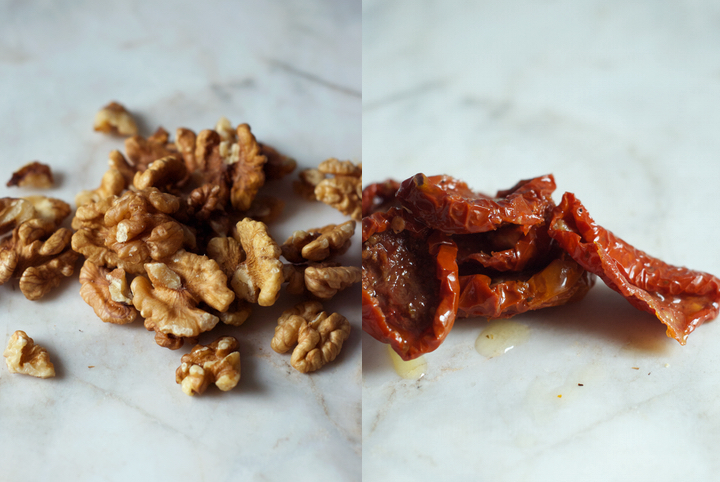
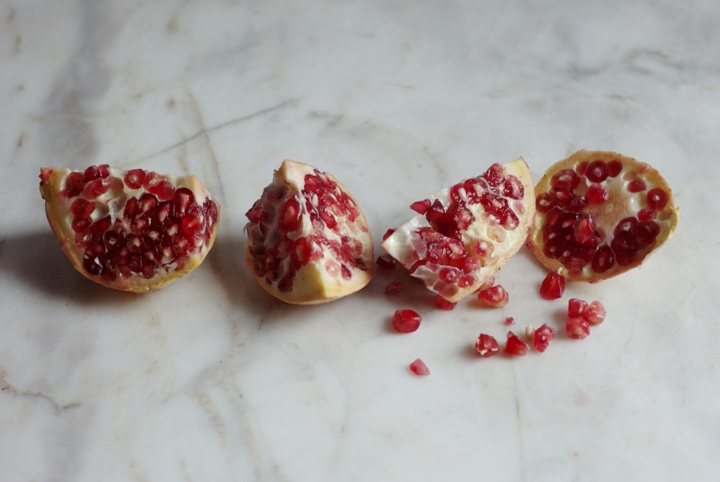
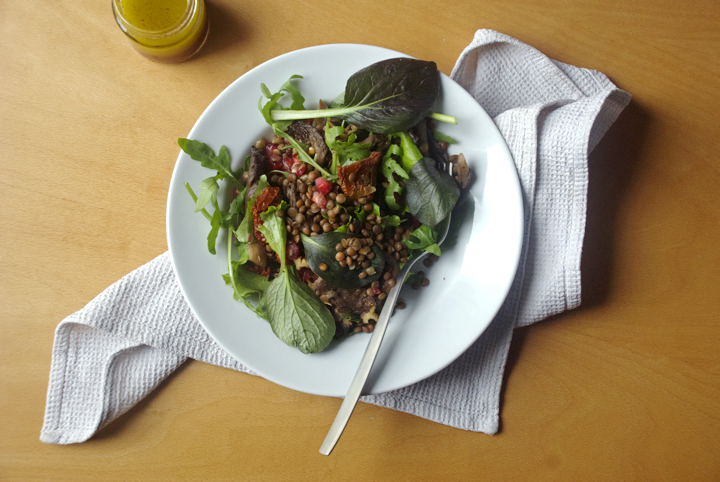
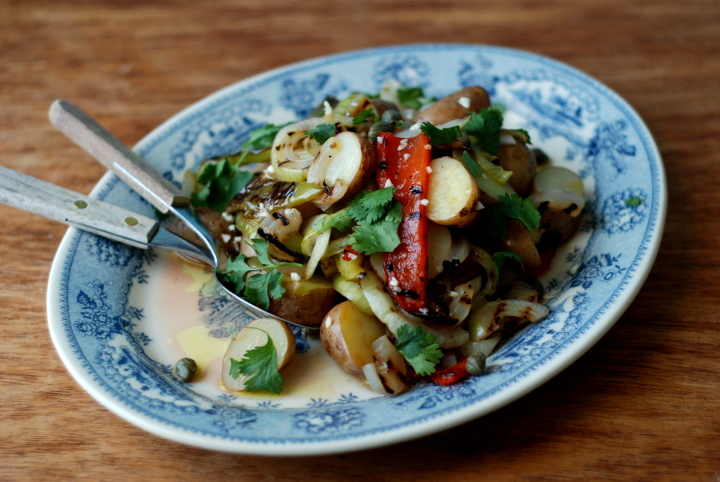
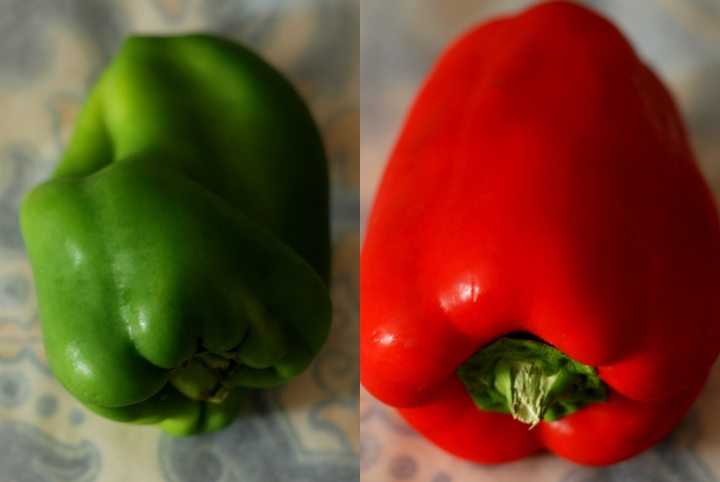
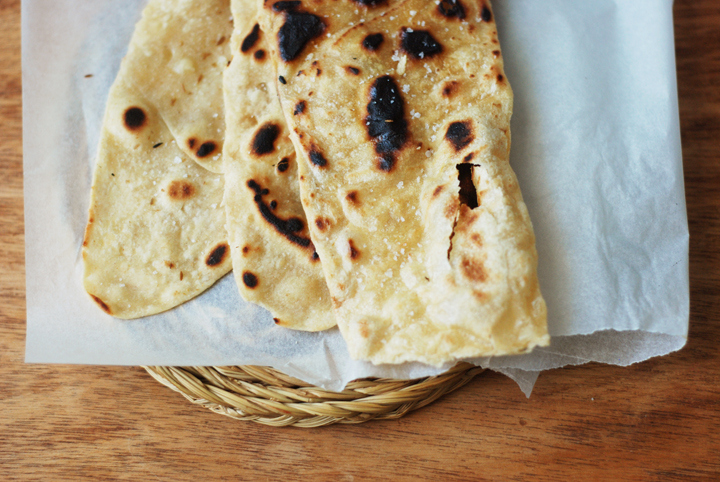
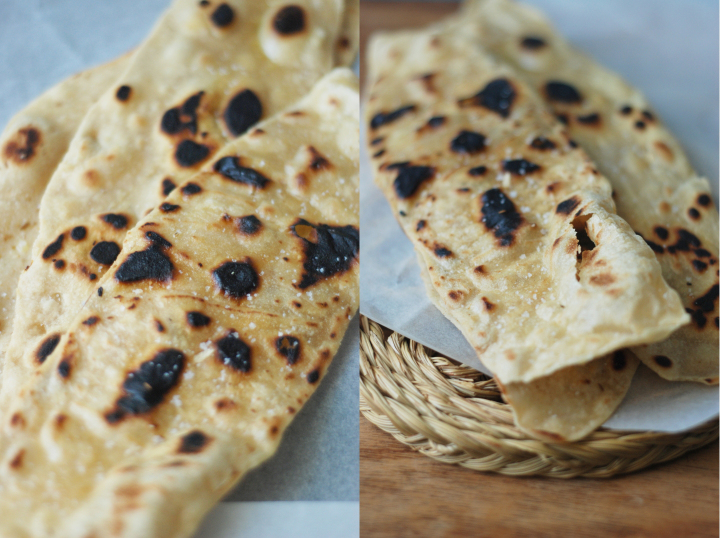
1 comment